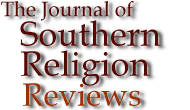

| "Georgia Methodists underwent a slow process of 'southernization,' but it was, Owen insists, never complete." | |
|
|
| "[Owen's] questionable assumption that the essence of agrarian discontent was to 'protect traditional ways' may lead to a too hasty identification of political movements and religious traditionalism." | |
|
|




